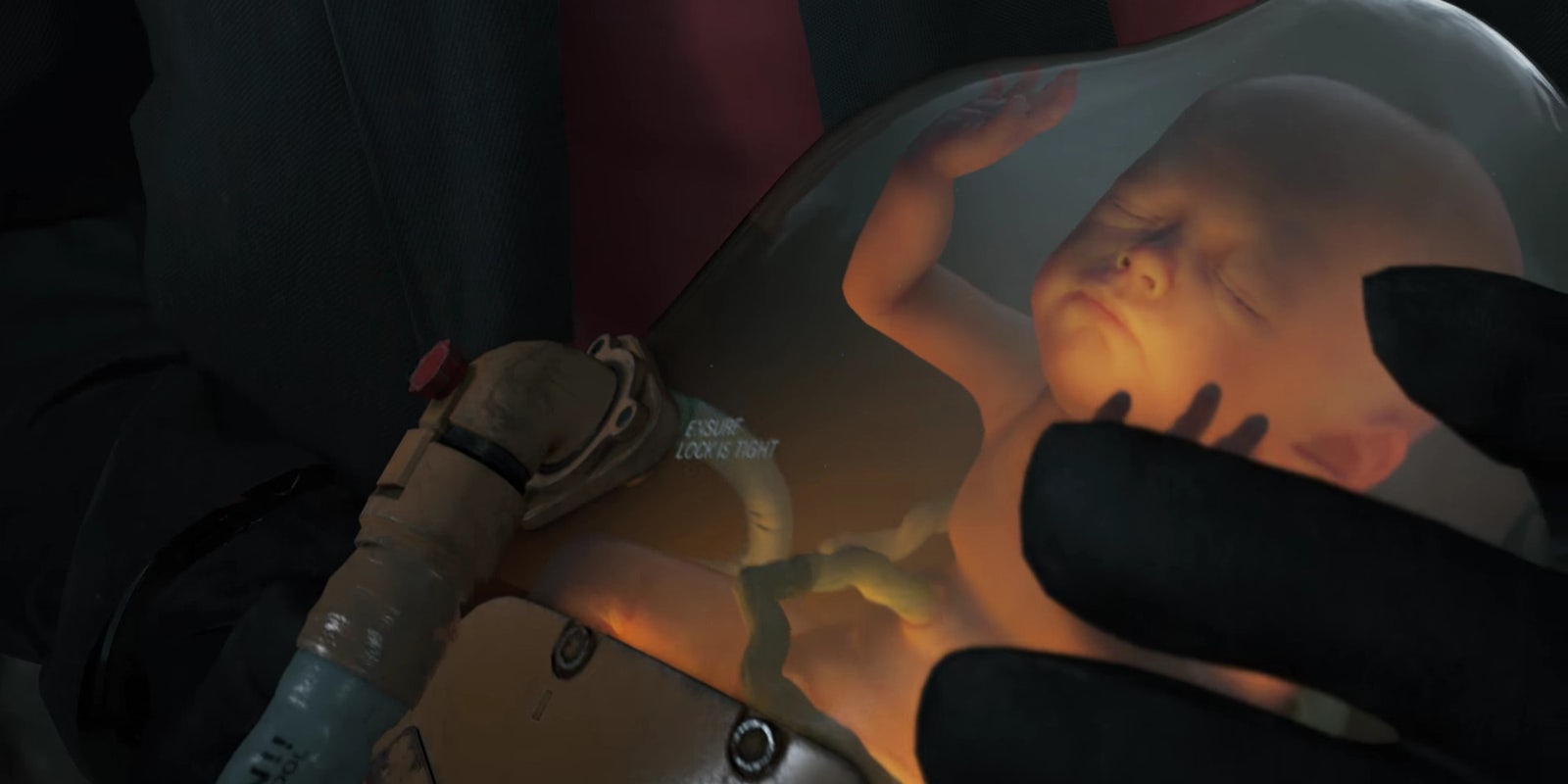There are many words I would use to describe my time with Death Stranding—and I do not think “fun” would be one of them. But games stopped needing to be fun to be worthwhile a long time ago. It’s a fair warning, though, to those hoping Hideo Kojima’s latest blockbuster experiment would feel anything like the “tactical espionage action” of Metal Gear Solid: Check your expectations at the door.
Kojima Productions’ first release rejects a key philosophy of modern open-world games. In the design of a series like Assassin’s Creed and Grand Theft Auto, there exists a desire to populate wide chunks of land with as many collectibles, characters, and conflicts as possible: to overwhelm the player with so many things to do precisely because they are there.
Death Stranding is not a game meant to occupy every second with something meaningful to do. It doesn’t care to optimize your path forward so you can clear a checklist quickly. This is a game obsessed with the act of climbing mountains: the inherent danger, the rigorous preparation, and ultimately, the payoff that can only come at the end of an arduous expedition.
How that time is spent—and how it easily can be lost—becomes key to understanding the experience of Death Stranding.
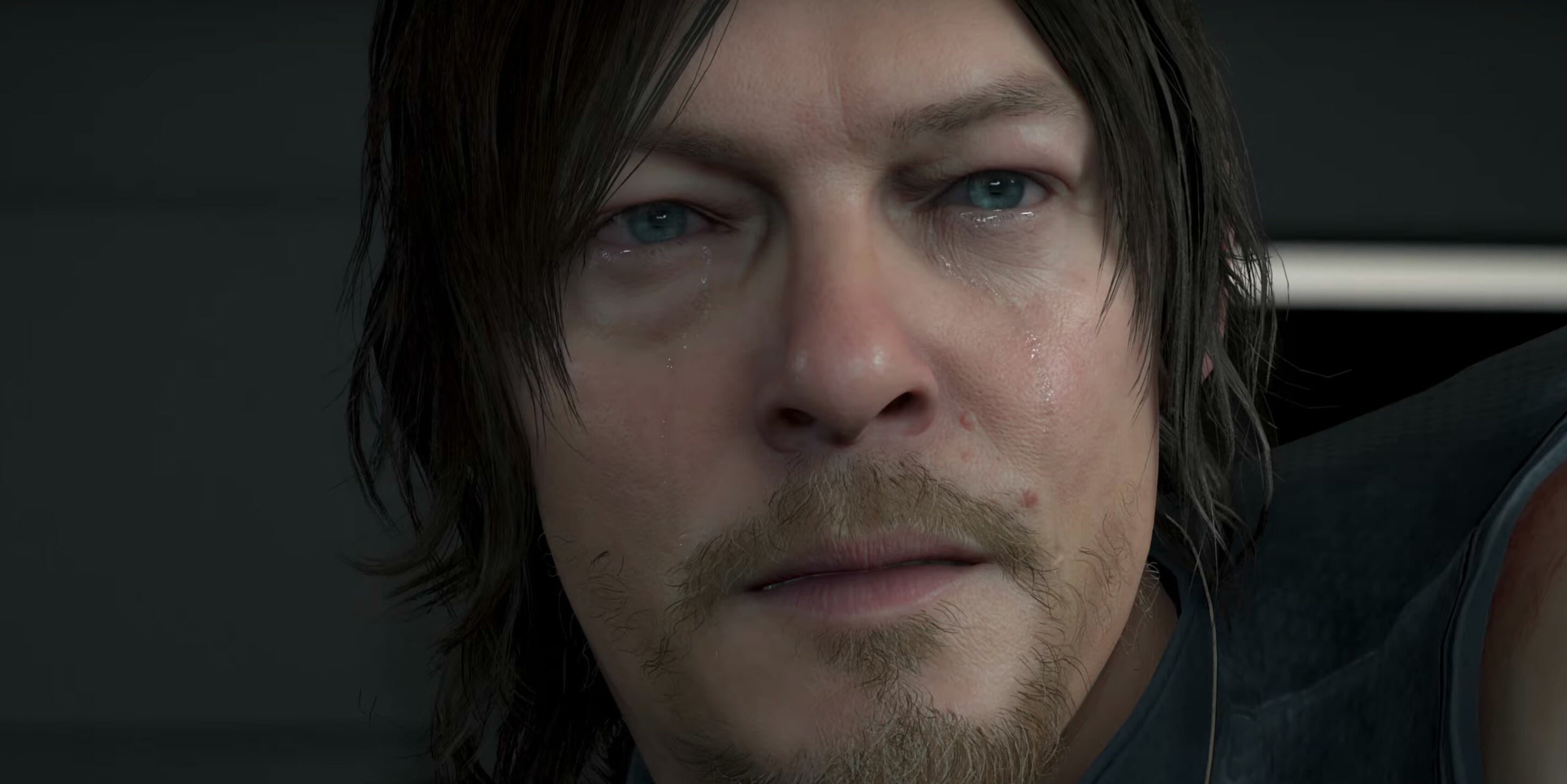
This is because Death Stranding, for all its enigmatic trailers and pre-release mystique, is surprisingly straightforward. The story centers on a quest to rebuild America before civilization becomes too fractured to continue. Frequent storms of rain called “Timefall” rapidly age every surface they touch, making it almost impossible for people to journey outside. Humanity faces a ticking countdown clock before the world as we knew it becomes too far gone. But above all else, the mechanics of Death Stranding’s actual gameplay grapple with the passage of time in a way that few games would be willing to commit to.
I played through the opening hours of the game waiting for what I imagined to be a contained tutorial to conclude, for some big twist to open up the world for exploration. But, from the first moment you gain control, the game asks nothing more than to move your character, Sam Porter Bridges, from one point on the map to another. Over and over again.
While it might sound reductive to describe Death Stranding this way, the game’s deliberate pacing leaves me no other option. The world is a barren, empty wasteland where you won’t discover hidden details or easy-to-overlook sidequests. Combat is routinely discouraged. Nearly all context—the story, character arcs, and worldbuilding—are delivered inside the sterile terminals serving as Sam’s objectives.
Portrayed with conviction by Norman Reedus, Sam faces a series of impossible journeys. The quest takes him (and you) up perilous cliffs, through dangerous ravines, and across desolate countryside. Sam’s movement is slow, meandering, and often at risk of complete upheaval. You can feel the weight of every step he takes. This is intentional. Compare Death Stranding to a game like Days Gone. For all the latter’s faults, the central action of maneuvering around the map on a motorcycle felt empowering and allowed you to navigate freely.
In Death Stranding, you walk (slowly, purposefully) across the continental United States with precious cargo and useful tools. You must consider the weight of your pack; Sam will struggle to push on if you’ve taken too much. It is not only a question of how much you carry, but where it goes. Every item you take with you remains visible on Sam’s body, towering high above his head or strapped to his broad shoulders. Too much weight carried on one side, and your character will lean that direction. And as you move, you’ll need to hold down buttons to center Sam’s balance and keep him from dropping anything.
In the best moments, this movement can play out like a rhythm game, with Sam’s actions mirroring player input in perfect harmony. For the most part, however, Death Stranding is demanding to a degree that feels almost comical.
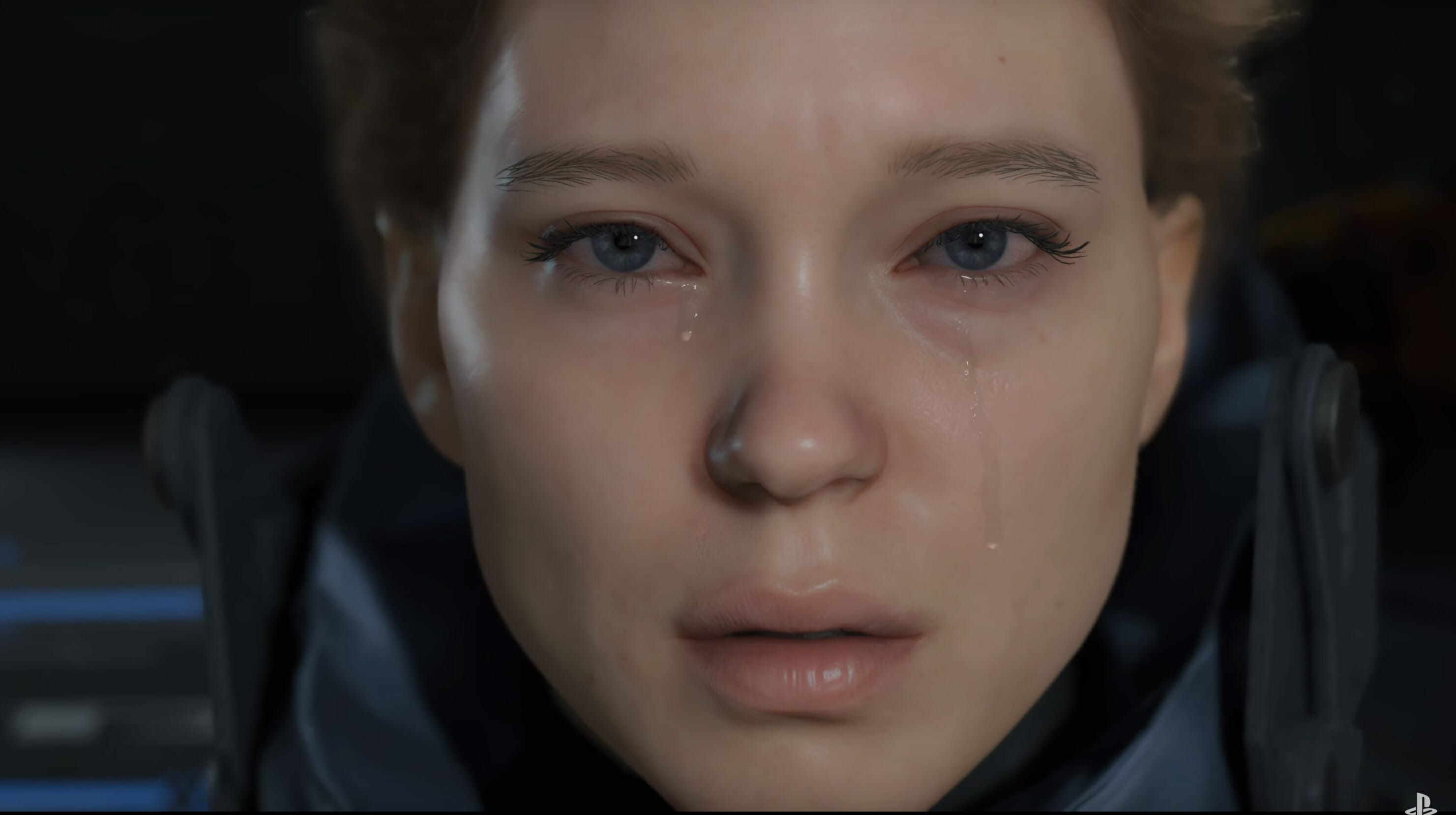
But before it becomes too obnoxious, the first chapters of Death Stranding best demonstrate what the game wants to do. As your map begins to expand, and the routes you must walk become larger and more complicated, you truly step into Sam’s shoes. While gameplay isn’t overtly “difficult,” it is challenging, communicating just how burdensome this mission is.
I could feel Sam’s exhaustion as I directed him across hours of scenic landscape. When the character model was covered in mud and needed to rinse off, I took relief in doing so. Even when I sat Sam down in a field to catch his breath, it came across as genuinely relaxing. Because Death Stranding is willing to apply such intense emphasis on the portrayal of physical drudgery, it earned those moments of immense satisfaction.
At its finest, Death Stranding is an interactive elegiac exercise. Sam Porter Bridges walks, usually alone, through a ruined world with the best chance for salvation strapped crudely to his frame. A stirring folk song picks up as a distant city comes slightly into view. Sam won’t continue if I don’t make him, so of course, I keep tilting the control stick. Here, Death Stranding shows what it is trying to be. This glimpse of intent, with the visuals, audio, and controls firing on all cylinders without doing much of anything at all, felt transcendent. The sad, lonely, adventuring became meditative, even mournful—as quietly devastating as a game like Shadow of the Colossus. In simplicity, Death Stranding shines, because as the game gets more complicated, it begins to fall apart.
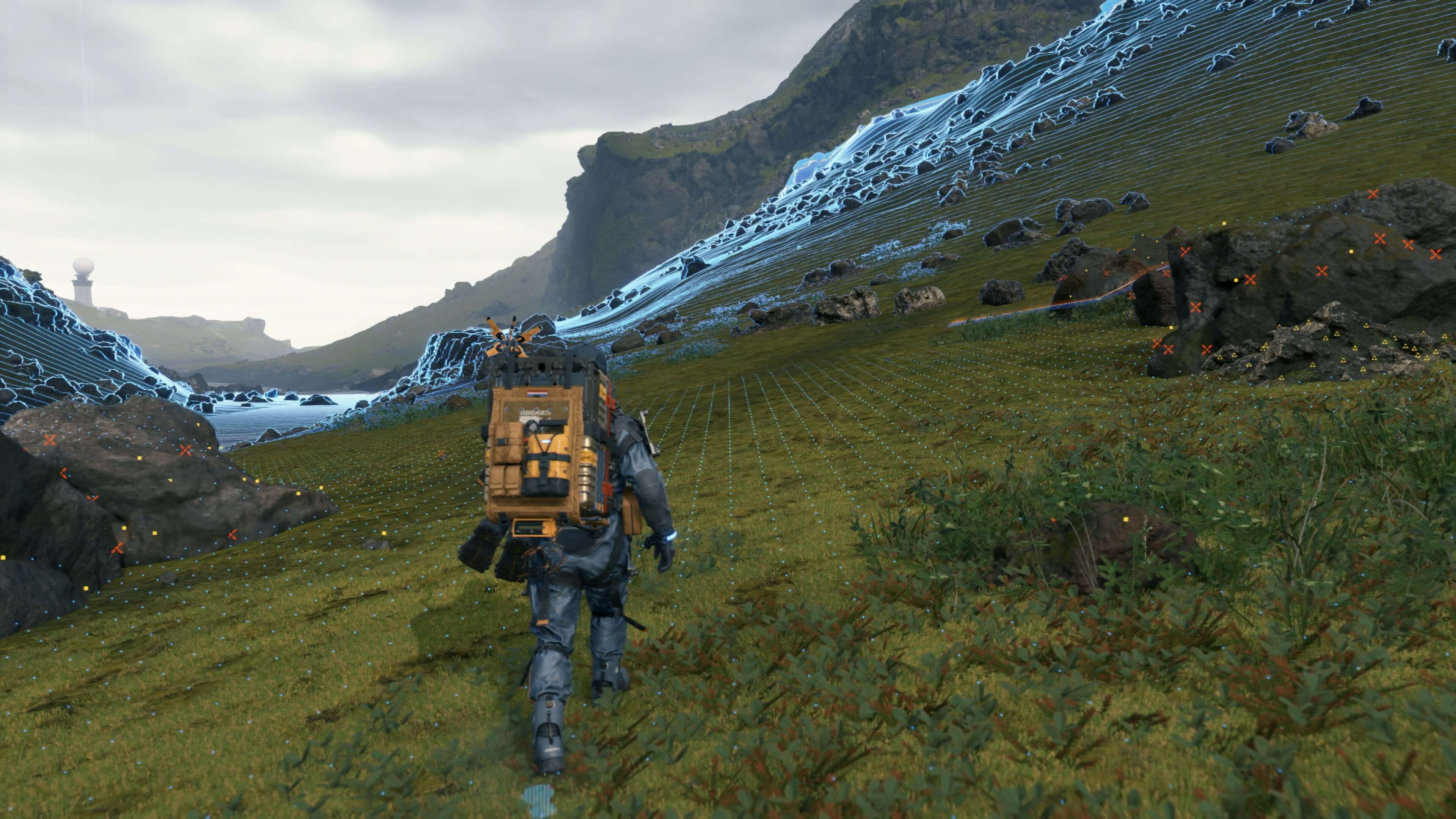
You start with walking, but the game soon adds new mechanics to complicate Sam’s journey. Ladders, ropes, and bridges help navigate dangerous terrain. Cargo-stealing bandits roam the plains, so you unlock the ability to craft rope guns and stun grenades. You can fabricate mobile stations to dispense ammo or store crafting materials. As you unlock more gadgets and vehicles, you’ll need to build generators to power them. And before each project, you must think about what you’ll need to carry; you should remember everything in Death Stranding has a weight value assigned to it.
Delicately placing everything essential for your mission on Sam’s back is revealed as the primary element of progression. It’s all one big balancing act. When delivering supplies to an outpost high in the hills, pack extra ladders. If your path seems to lead through a terrorist camp, better bring more stun weapons. You’ll need to monitor the durability of your boots, as well. All this math can add up fast—and Death Stranding begins to feel like an open-world game that doesn’t care about anything except reminding the player they’re carrying too much stuff.
Mechanics like this have merit, certainly. But they do not work in a story that winds on with no discernible end in sight, simultaneously touching on everything from the budding asexuality of a post-apocalyptic society to the morals of eco-terrorism. I was initially raptured by the boldness of Death Stranding’s experimental gameplay, but stretching those systems out over a 60-hour narrative made me downright miserable.
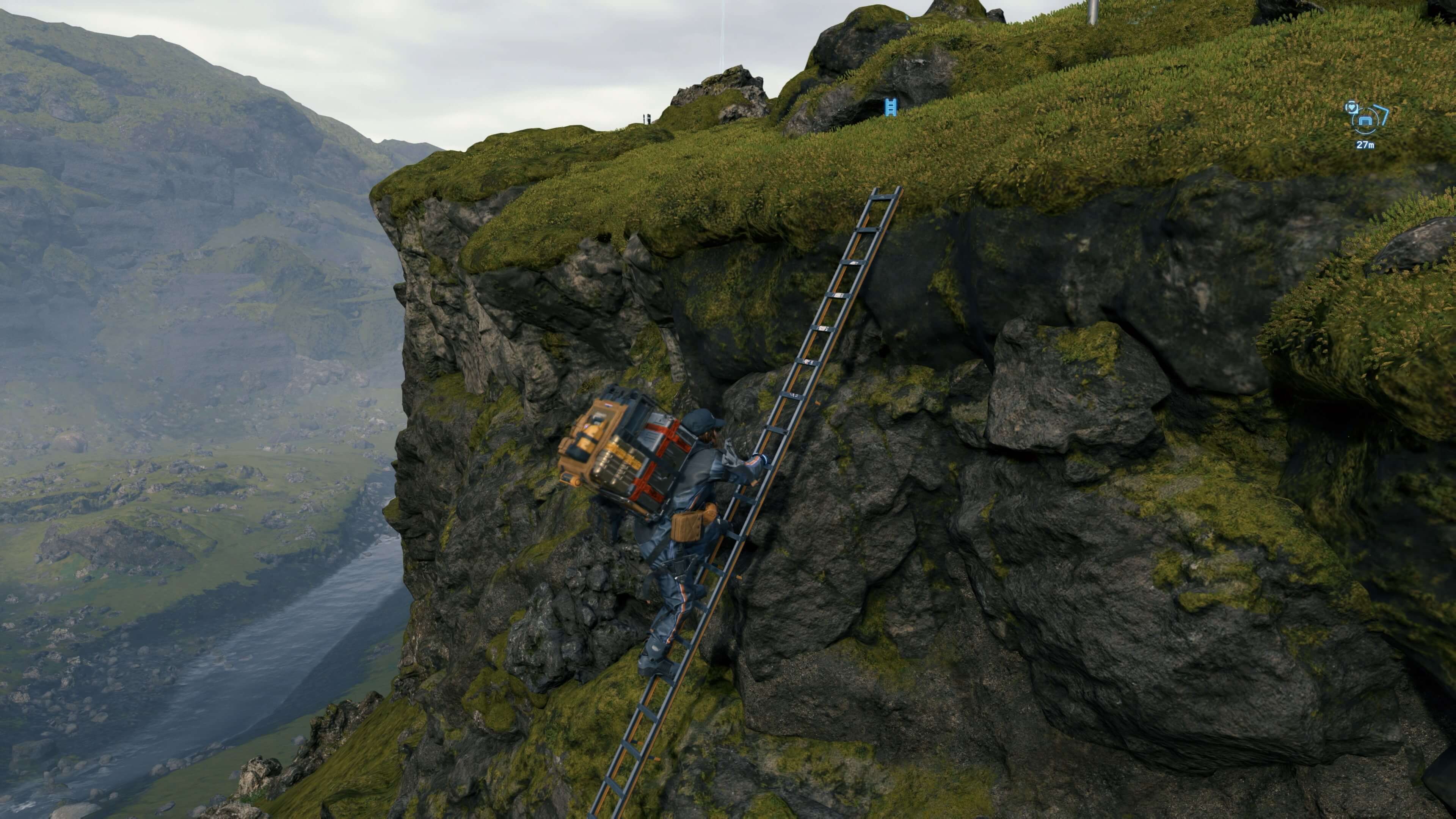
I suppose that brings us to the Hideo Kojima of this whole thing. One of the most prolific, beloved, and belittled names in the game industry, Kojima has teased Death Stranding as a groundbreaking moment for games since he parted ways with Konami in 2015. For every fan who scoffed at the self-serious nature of the game’s marketing, there is another who takes the developer’s promise as the word of God. It would be impossible to dig into Death Stranding while ignoring his direction; so much so that “A Hideo Kojima Game” should just be included as part of the formal title.
With this game, Kojima has translated his eccentric taste and celebrity-obsessed Twitter feed into one of the most high-profile entertainment products of the year. On top of Norman Reedus, Léa Seydoux, Margaret Qualley, Mads Mikkelsen, Guillermo del Toro, Nicolas Winding Refn, Conan O’Brien, and many more recognizable faces I’m not allowed to mention all play a role in the story. At a certain point it feels like Kojima was handed a blank check to produce a big-budget game based around artists he wanted to hang out with, and that very well may be what happened. But maybe the worst part of all the stunt casting in Death Stranding? It works!
Excellent performances across the board sell the story, even in ridiculous moments. While the recognizable likenesses might be distracting at first, they quickly begin to feel organic. I don’t think Norman Reedus has ever played a character as compelling as Sam Porter Bridges. The secretive nature of the game’s story isn’t something I want to give away, but I will say most key details are discernible from what’s already been released. While Death Stranding is certainly ambitious and over-the-top, it isn’t obtuse. At least not when it comes to the narrative.
Though Hideo Kojima games have always borrowed (read: shamelessly stolen) cinematic inspiration, Death Stranding is able to toe the line between mediums more proficiently than any of the Metal Gear games. Even as a devoted fan of titles like Snake Eater and The Phantom Pain, I was thrilled to see Kojima demonstrate more restraint here than ever before. Because while Death Stranding absolutely still features shadowy government agents, an absurd number of acronyms, and unfortunately named female characters, it all forms a cohesive storyline.
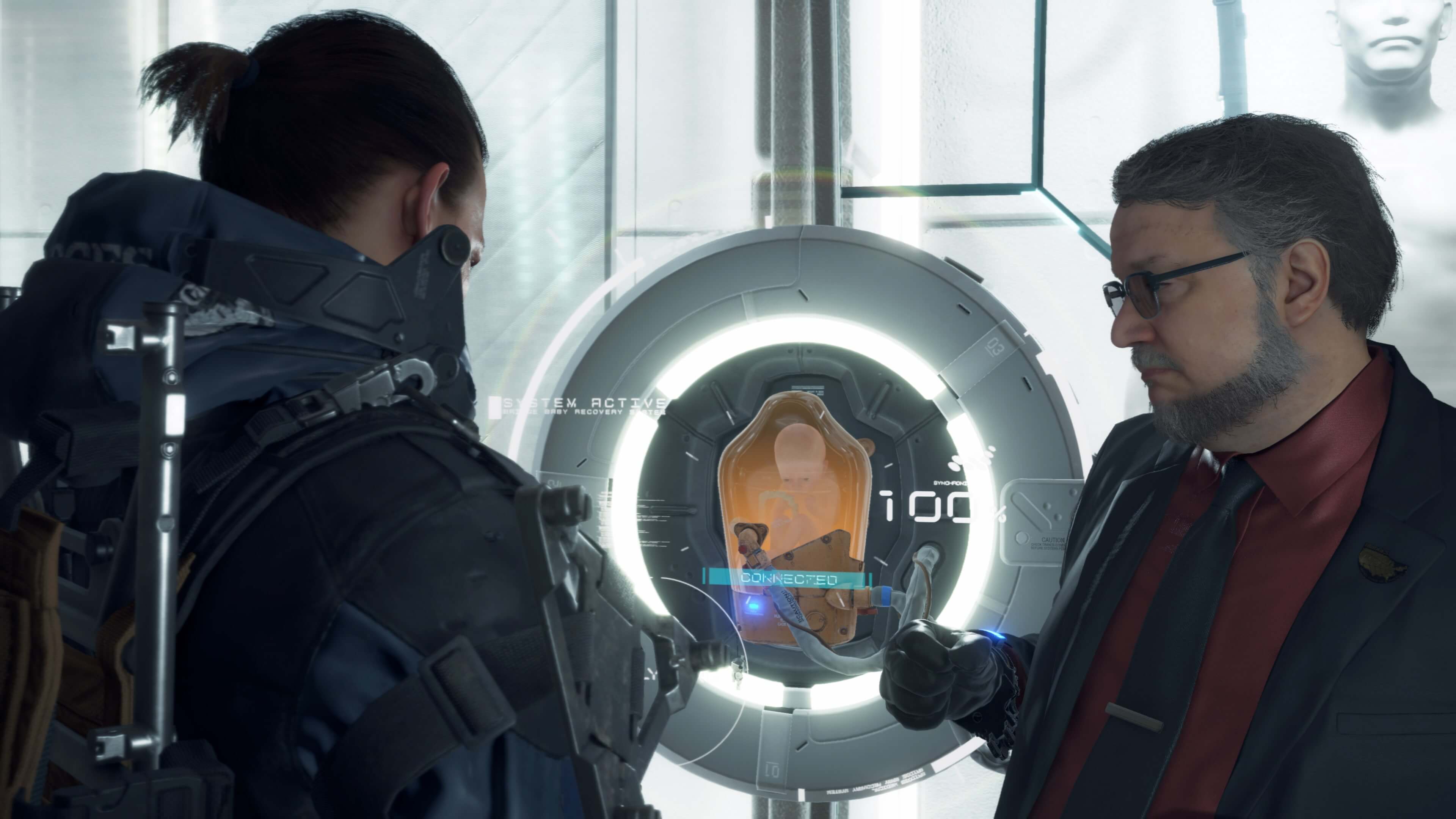
In many ways, the simplistic setup of Death Stranding works in its favor. Years ago, a cataclysmic event ended society as we know it. You are Sam Porter Bridges. You are meant to fix the world. From there, you embark on a quest that criss-crosses the country, re-connecting separate cities in a tech-meets-magic service called the Chiral Network. Every new addition lets you see a little bit more on the map and provides a base to build more resources. You can use all these tools to make trekking from coast-to-coast more attainable—oh, and by the way, you’re not the only one out there.
Other players—real, actual humans—can make use of the tools you lay down (and vice versa). Thanks to the frequency of Timefall (that pesky rain what wipes away everything it touches), Death Stranding’s map is a living, changing thing. You never encounter these other avatars face-to-face, just exchange thanks as a currency, like two over-encumbered ships passing in the night.
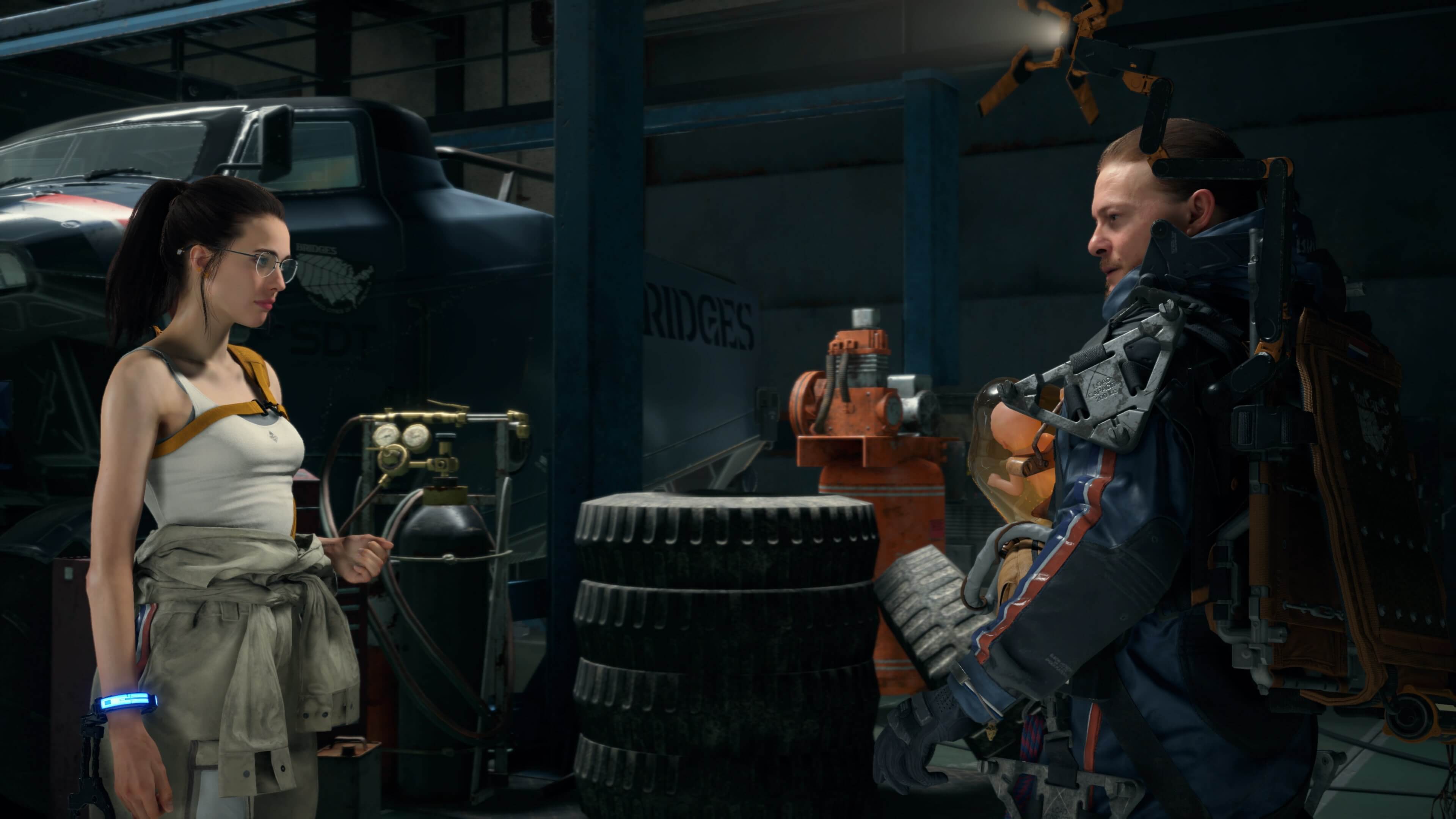
The asynchronous MMO-esque aspects of the game work well enough, as it’s always a relief to come across a well-placed ladder from a fellow traveller. Conversely, watching the “likes” pour in on a piece of cargo you trusted to someone else cuts directly to the pathos of an “everyone, come together” message. Kojima has been clear that he doesn’t consider this to be an action game, and now we know why.
Death Stranding is complicated. On one hand, it tells a compelling story packed with mystery and tension. On the other, it steps on its creative vision at almost every opportunity with dense, derivative systems. This pairing of intentional gameplay mechanics with stubborn, strict conditions often distracted from the genuinely moving moments as they came. Digging through the maps and menus in this game was rarely engaging, and I spent a lot of time doing so. In fact, most of the time I was playing Death Stranding I was frustrated about one thing or another.
Whether falling off a steep drop or tripping on tough terrain, the game is just full of obstacles meant to impede players. And so much of it is repetitive, with every identical base, flat character model, and copied asset blending into ennui. Despite all the time I felt Death Stranding was actively wasting, as if confronting me to walk away in annoyance, I still respect its message. With the poignancy of an experiment like Journey or The Witness and an inflated budget on par with Red Dead Redemption 2, I’ve never seen anything quite like Death Stranding. It never tries to chase what’s trendy in the current moment, and it emerges as a flawed masterpiece—an earnest, albeit compromised, experience.
Score: 3.5/5
Death Stranding will be available for PS4 on Nov. 8. It will release on PC next year. This review was written based on a version of the game provided by the publisher.
